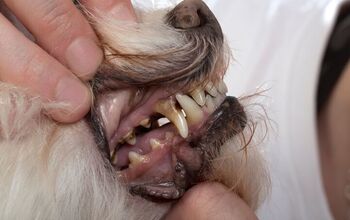Study Finds Designer Dogs At High Risk of Tick Infestation

If you are regularly finding ticks in your dog’s coat, you might be wondering if there’s something special about your pooch that makes it more prone to attracting these blood-sucking pests than other dogs. Well, a new study can shed some light.
Researchers from Royal Veterinary Colledge (RVC) have discovered that some dog breeds are more likely to become infested by ticks. The study revealed that popular designer crossbreeds such as cavapoo, cockapoo, goldendoodle, and cavachon have an increased risk of tick infestation due to their poodle heritage.
Researchers identified standard poodles as the second most likely breed to become infested by ticks, suggesting that ticks find the poodle’s curly coat particularly appealing.
“There is no single perfect dog breed so it is critical that we fully understand the strengths and weaknesses for the breed we choose to bring into our own family. Owners of dogs that are either poodle or have poodle heritage can now be aware of the need to routinely check their dogs for ticks and to perhaps ensure the coats of these dogs are kept short,” said Dr. Dan O’Neil, lead author of the study.
Designer dog breeds have become extremely popular among pet lovers in recent years. Poodles are often crossed with other pure breeds to create designer hybrids, mainly because of their low-shedding coats which are considered hypoallergenic. However, this new study points out that designer dogs are at an increased risk of tick infestations because of the poodle’s curly coat.
The RVC’s VetCommpass study analyzed a random sample of veterinary health records of 900,000 dogs in the UK. The results showed that ticks are a common parasite in dogs, with one in every 50 dogs diagnosed with at least one tick infestation during five years.
Researchers also looked at possible risk factors to understand what makes some dogs more likely to attract ticks than others. The possible risk factors included traits such as skull shape, breed purity, coat, and body weight.
While the study found that newer designer breeds had a higher risk of tick infestation, it also discovered that some pure breeds are also at high risk. These included the cairn terrier, standard poodle, golden retriever, Person Russell terrier, and miniature schnauzer.
Interestingly, researchers have established that Staffordshire bull terriers, rottweilers, Chihuahuas, and English bulldogs have the lowest risks of tick infestation.
The study also found that male dogs had a 1.24 higher risk of attracting ticks than female dogs. Dogs with medium-length coats and pooches with V-shaped drop, or long, floppy ears also exhibited an increased risk of tick infestation.
“Ticks aren’t just pests that feast on your dog and cause them to itch; they can also be carriers of serious diseases. They can be dangerous for any age of dog and indeed any breed - although this paper shows that some dogs can be more susceptible to picking them up due to their coat - so it’s important owners know what to do if they spot one,” said Bill Lambert, Welfare and Breeding Service Executive at The Kennel Club.
Ticks are blood-sucking parasites that attach to a dog’s skin and can stay there for up to a week, before falling off when they are full of blood. In addition to feeding on a dog’s blood, ticks also transmit diseases.
The most common tick-borne diseases that affect dogs are Lyme disease, Rocky Mountain spotted fever, ehrlichiosis, anaplasmosis, babesiosis, hepatozoonosis, and bartonellosis. These are serious diseases that can have detrimental health consequences for dogs if not treated in time.
Although ticks normally live in woodlands and grasslands, they can be found in urban areas and popular hiking trails. The best way to protect your pooch is to stay up to date with your dog’s tick prevention.
Join the PetGuide community. Get the latest pet news and product recommendations by subscribing to our newsletter here.

Nevena is a freelance writer and a proud mom of Teo, a 17-year-old poodle, and Bob, a rescued grey tabby cat. Since childhood, she had a habit of picking up strays and bringing them home (luckily, her parents didn't know how to say NO). When she's not writing for her fellow pet parents, Nevena can be found watching Teo sleep. To her defense, that's not as creepy as it sounds!
More by Nevena Nacic





















